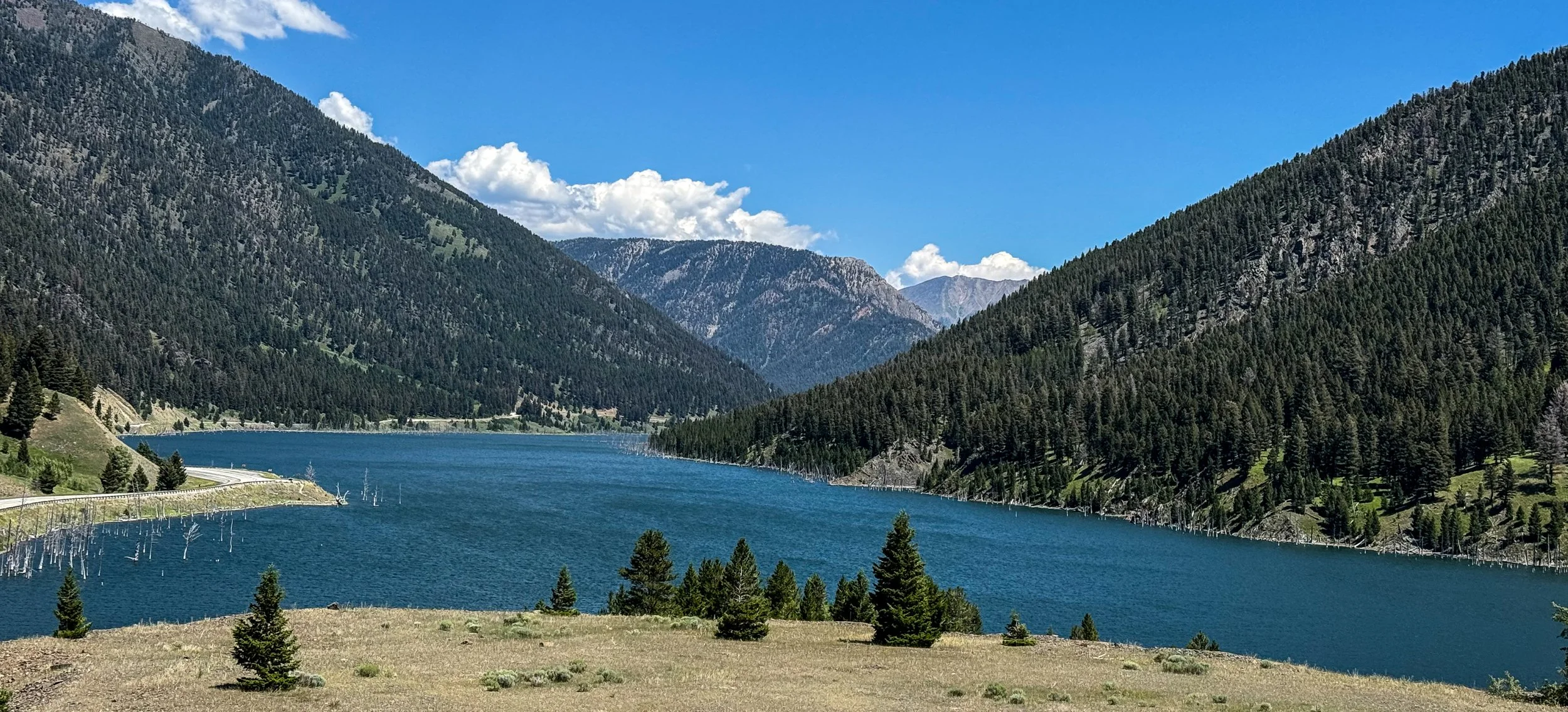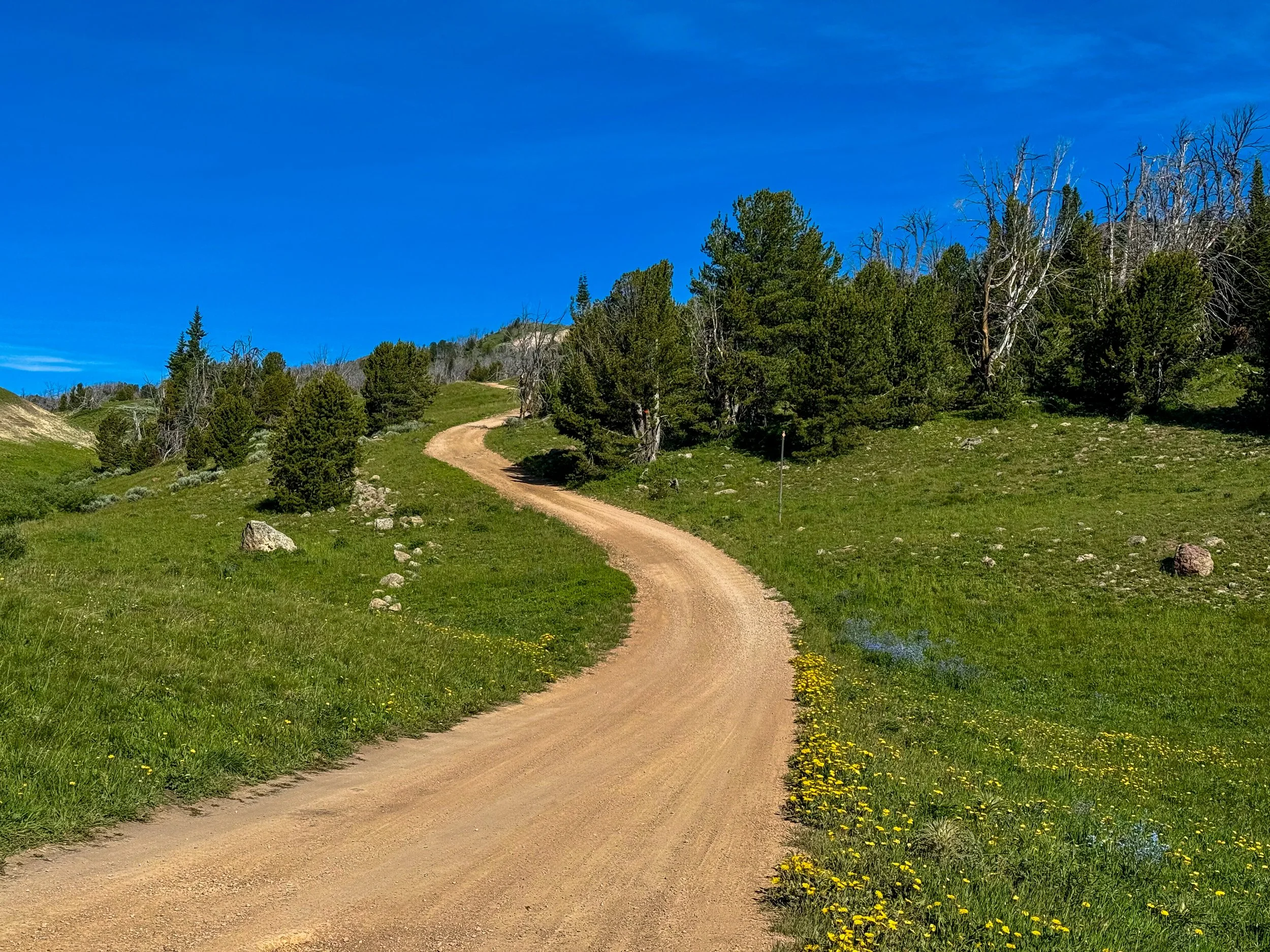Tetons, Yellowstone and Madison Marathon
After signing up for a marathon near Ennis, Montana in July, we figured we’d make a vacation out of it and check out the Tetons and Yellowstone—Staci hadn’t been to either. We hit the road with the Airstream, and our first stop was the little town of Lander, Wyoming.
Lander, Wyoming is a small, outdoorsy town nestled at the base of the Wind River Mountains in central Wyoming. With a population around 7,500, it’s known for its laid-back vibe, wild scenery, and strong connection to both the Old West and outdoor adventure.
Lander, Wyoming is a small, outdoorsy town nestled at the base of the Wind River Mountains in central Wyoming. With a population around 7,500, it’s known for casual vibe, wild scenery, and jumping off point for adventures in the Wind River mountains. It also has a quirky side as evidenced in the house above.
After leaving Lander we headed North to the Tetons. This view of the Tetons with the Snake river in the foreground has to be one of the most beautiful, photographed scenes anywhere.
After arriving in Grand Teton National Park, we set up camp at Gros Ventre Campground. There’s nothing better than staying right inside a national park, and Gros Ventre didn’t disappoint. Tucked along the Gros Ventre River and surrounded by cottonwoods and sagebrush, the campground feels peaceful and remote—even though it’s just a short drive from Jackson and the Jenny Lake area.
We explored the trails around Jenny Lake during our day in the Tetons.
July is Wildflower season!
Hiking the Jenny Lake trail.
A Marmot hoping Staci will share her lunch.
The views from the North part of the Jenny lake trail are spectacular.
On top of Inspiration Point, above Jenny Lake.
There are a lot of Moose in the Tetons but this is the only one we saw - in Moose Pond…
Jackson Hole ski area has gone from a small local area to an international destination (like Aspen) for the wealthy.
A view of the Tetons with the Mormon Row Cabins in the foreground. In the 1890s, Mormon settlers from Idaho began moving into the Jackson Hole Valley hoping to build a new life. They organized themselves into a cluster of homesteads to share labor and resources, which was typical of Mormon settlements. This area came to be known as Mormon Row.
While driving through a remote area of the park awe saw a baby Grizzly Bear climbing a tree.
She started to get tired of our photos and was wondering if we’d ever leave.
A view of Mount Moran with Jackson Lake in the foreground.
After leaving the Tetons we headed North to Ennis, Montana. On the way we stopped at Earthquake Lake. On August 17, 1959, at about 11:37 p.m., a magnitude 7.5 (later revised to ~7.3) earthquake struck near the Madison River, just upstream of Hebgen Lake The earthquake triggered a massive landslide of 80 million tons of rock completely blocking the Madison River and creating a natural dam within minutes The slide devastated the Madison River canyon, tragically killing 28 people, many of whom were camping downstream or near Hebgen Lake.
Originally settled in the 1860s, Ennis Montana grew out of the local ranching and mining industries. It retains its western heritage and has become a world famous destination for fly fishing. Ennis is located on the Madison River in a valley between the mountains of Big Sky and the Gravelly range.
Looking east toward Big Sky from our Campground in Ennis.
Ranching is common throughout the valley.
Ennis Lake is just North of the town.
Lots of Osprey around Ennis lake.
Just West of Ennis was the ghost town of Virginia City.
Virginia City is beautifully restored and many of the original building are open to tourists.
In the 1800s, you could have been hanged for a relatively minor crime.
Virginia City from above.
Marathon day arrived. This was a very remote Marathon and it took 90 minutes driving on rough dirt roads to get to the meeting spot where the bus would then take us to the start. It was exhausting just getting to the start !
Sam, the race director inspiring all of us at the start. He says “this ain’t no pansy ass city race” - and he was right.
The Madison Marathon took place on a dirt road, high up in the Gravelly range. The start was close to 9000 feet and the first three miles were uphill.
The views from the marathon course were spectacular. This is Black Butte Mountain with lots of wildflowers in the foreground.
Monument Ridge was the high-point of the course.
A good view of course ahead.
The entire course was treeless and had views like this. The only downside was the bugs - we had swarms of Horse Flies and Deer Flies biting us during the last 3 hours of the race !
Staci smiling at the finish, She was the 2nd Woman finisher (the first place finisher won a bottle of Whiskey but we weren’t sure she was old enough to drink it).
Leaving Ennis and heading toward Yellowstone.
Yellowstone Lake is the largest high-elevation lake in North America, sitting at 7,733 feet above sea level in the heart of Yellowstone National Park. The lake lies in the Yellowstone Caldera, a massive volcanic crater formed by an eruption 640,000 years ago.
West Yellowstone has a Grizzly & Wolf Discovery Center where you can get amazingly close to animals that are no longer able to survive in the wild.
Early morning Elk grazing near the Madison River in Yellowstone.
Clepsydra Geyser.
Grand Prismatic Spring is the largest hot spring in the United States and the third largest in the world—but it’s most famous for its brilliant rainbow-colored rings that look like something out of a dream.
Firehole River.
I was waiting for this Bison to fall over as he was itching himself.
Old Faithful is still erupting every 90 minutes.
This Bison was just off the path near Old Faithful.
An Eagle along the Yellowstone River.
Upper Yellowstone Falls.
Yellowstone Falls and River from Artist Point.
Mammoth Hot Springs.
Beautiful flowers along Chittenden Trail.
Driving through Silver Gate.
Fort Yellowstone, which not provide park employee residences, is a historic military post located at Mammoth Hot Springs. It served as the park's administrative and military headquarters from 1891 to 1918, during a critical time when Yellowstone was still figuring out how to protect itself from poachers, vandals, squatters, and profiteers.
Yellowstone became the first national park in the world in 1872, but there was no real system in place to manage it. Early superintendents lacked funding and personnel to enforce the rules. Poaching was rampant (even bison were being illegally hunted), and thermal features were damaged by souvenir hunters.
So in 1886, the U.S. Army was brought in to establish order. Soldiers from Company M of the 1st U.S. Cavalry rode into the park from Fort Custer, Montana, and set up temporary camp at Mammoth Hot Springs.
By 1891, the Army built permanent structures—this became Fort Yellowstone.
Norris Geyser Basin is the hottest and oldest geothermal area in Yellowstone. Unfortunately the geysers are not predictable and you may or may not see eruptions while visiting.
Our drive home took us over Teton Pass which connects Idaho and Wyoming at the southern end of the Tetons. For centuries, Native American tribes such as the Shoshone and Bannock used the pass as a seasonal route to cross the Tetons for trade, hunting, and gathering.

































































